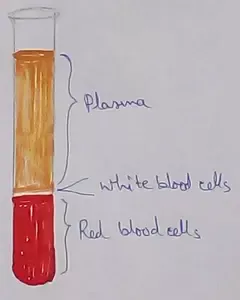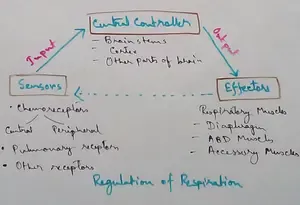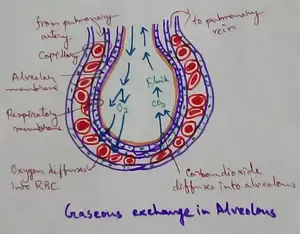Simplification in Decimals
In simplification of decimals we will have to carry out four different operations together. However while carrying out these all four operations we think about which operation to carry out first. In such circumstances we have to follow BODMAS rule. This rules states:
B stands for Brackets
O stands for Of
D stands for Division
M stands for Multiplication
A stands for Addition
S stands for Subtraction
So we will solve simplification in decimals following this order as shown by BODMAS rule. First we need to solve the Brackets then Of that is actually Division then multiplication, Addition and lastly Subtraction.
Here are few examples to illustrate the same:
1. 5.5 ÷ 1.1 × 0 + 3.5
Solution:
5.5 ÷ 1.1 × 0 + 3.5
= 5 × 0 + 3.5
= 0 + 3.5
= 3.5
Explanation:
Here according to the BODMAS rule first division is carried out. So 5.5 divided by 1.1 is 5. Then 5 is multiplied with 0 to get 0 and then 3.5 is added to get 3.5.
2. 6.5 × (1.2 + 2.3) ÷ 0.7
Solution:
6.5 × (1.2 + 2.3) ÷ 0.7
= 6.5 × 3.5 ÷ 0.7
= 6.5 × 5
= 32.5
Explanation:
This sum will also be solved using BODMAS rule hence the numbers in the brackets should be added first. So, 1.2 and 2.3 will be added to get 3.5 then 3.5 will be divided by 0.7 to get 5. Then 6.5 is multiplied by 5 to get 32.5. So the sequence of operation in this simplification is first the brackets then division and lastly multiplication.
3. (8.5 ÷ 1.7) ÷ 2.5 × 9.32
Solution:
(8.5 ÷ 1.7) ÷ 2.5 × 9.32
= 5 ÷ 2.5 × 9.32
= 2 × 9.32
= 18.64
Explanation:
In this simplification as well the bracket will be solved first hence 8.5 is divided by 1.7 to get 5 and then 5 divided by 2.5 to get 2 and the 2 is multiplied by 9.32 to get 18.64 following the BODMAS rule
4. 3.2 × 2.2 + 4 - 4.67
Solution:
3.2 × 2.2 + 4 - 4.67
= 7.04 + 4 - 4.67
= 11.04 - 4.67
= 6.37
Explanation:
In this simplification there are three operations to be performed that is multiplication, addition, subtraction. According to BODMAS rule we will have to first multiply then add and then finally subtract. So, 3.2 multiplied by 2.2 is 7.04 then in next step it is added to 4 to get 11.04 and finally 4.67 is subtracted from 11.04 to get 6.37.
5. 6.3 ÷ 2.1 + 5.5 × 3
Solution:
6.3 ÷ 2.1 + 5.5 × 3
= 3 + 5.5 × 3
= 3 + 16.5
= 16.5
Explanation:
Here we will first carry out division that is 6.3 divided by 2.1 is 3 then in the next step we will carry out multiplication that is 5.5 multiplied by 3 is 16.5. At last both the results from division and multiplication is added. In accordance to the BODMAS rule we have first done division, then multiplication and finally addition.
From Simplification in Decimals to HOME PAGE
Recent Articles
-
What Is Plasma? | Blood Plasma | Proteins | Nutrients | Cholesterol
Nov 07, 25 10:29 AM
Blood is a mobile fluid which is a connective tissue and is derived from the mesoderm like cell any other connective tissue. Colour of blood is reddish and that flows inside the blood vessels by means… -
Disorders of Respiratory System | Tuberculosis | Pleurisy | Emphysema
Oct 28, 25 11:39 PM
Tuberculosis is very common disease and is caused by a type of bacteria called Mycobacterium tuberculosis. This disease causes different trouble in the respiration and infection of several parts of th… -
Regulation of Respiration | Respiratory Centres | Inspiratory Area |
Oct 14, 25 12:13 AM
Respiratory Centre is the area that controls the rate of respiration and it is observed to be located in medulla oblongata and pons. Respiratory Centre has the following will dispersed components like… -
Explain Transport of Gases | External Respiration | Tissue Respiration
Oct 09, 25 11:35 PM
In humans gaseous exchange is completed in the following ways the steps are - External Respiration or Breathing - Breathing in false taking in of Oxygen and giving out of carbon dioxide in the body. M… -
Kind and Number of Teeth | Location of Teeth in Mouth | Care of Teeth
Sep 11, 25 12:52 AM
Kind and Number of Teeth






New! Comments
Have your say about what you just read! Leave me a comment in the box below.